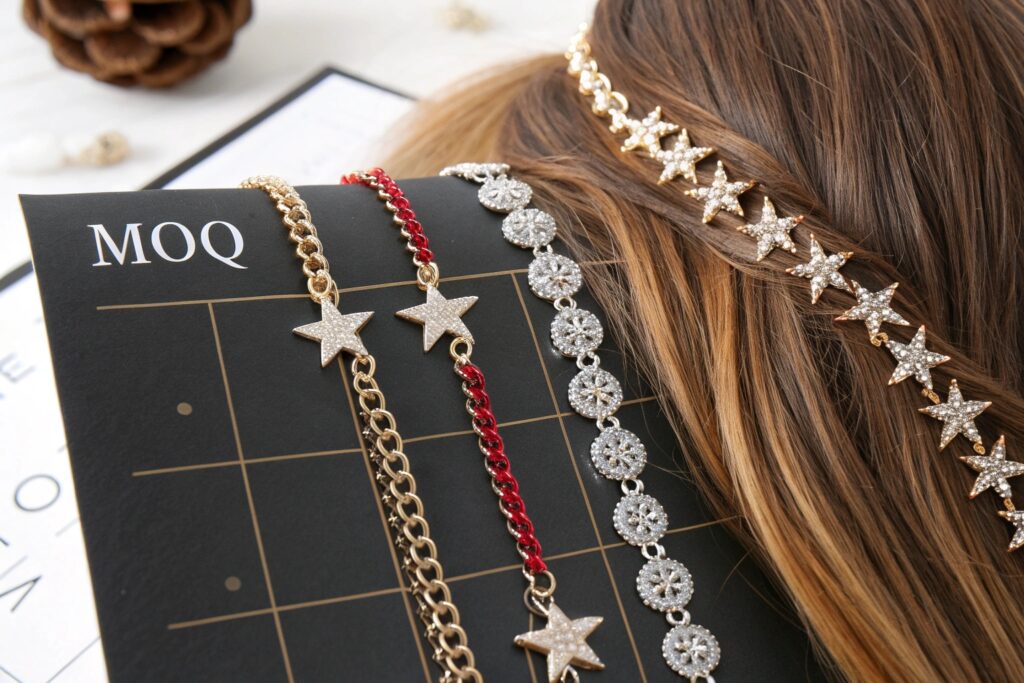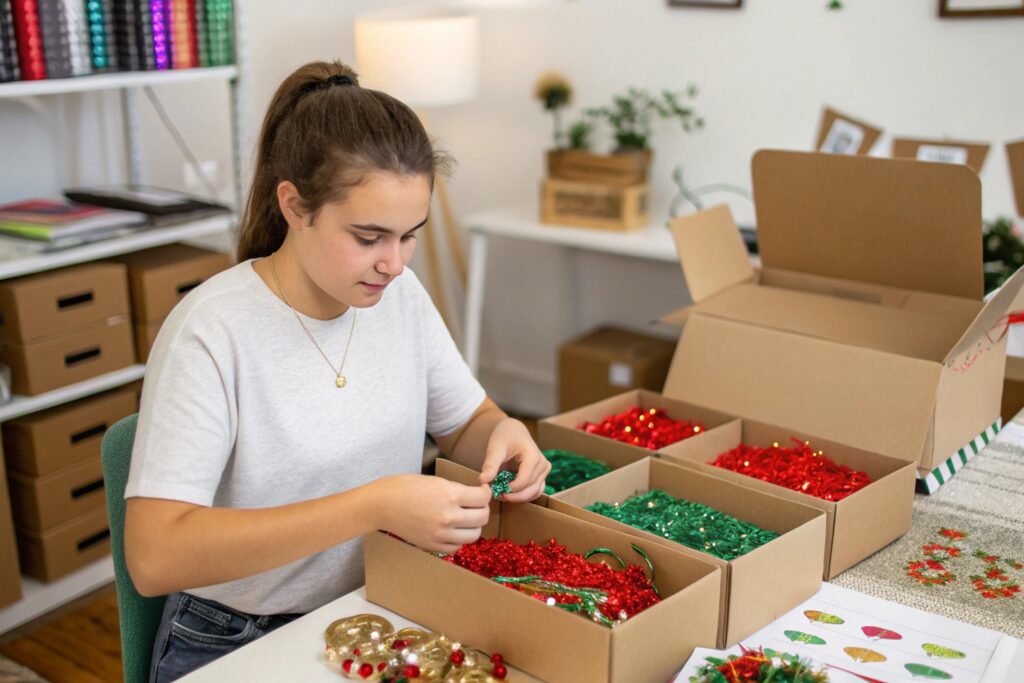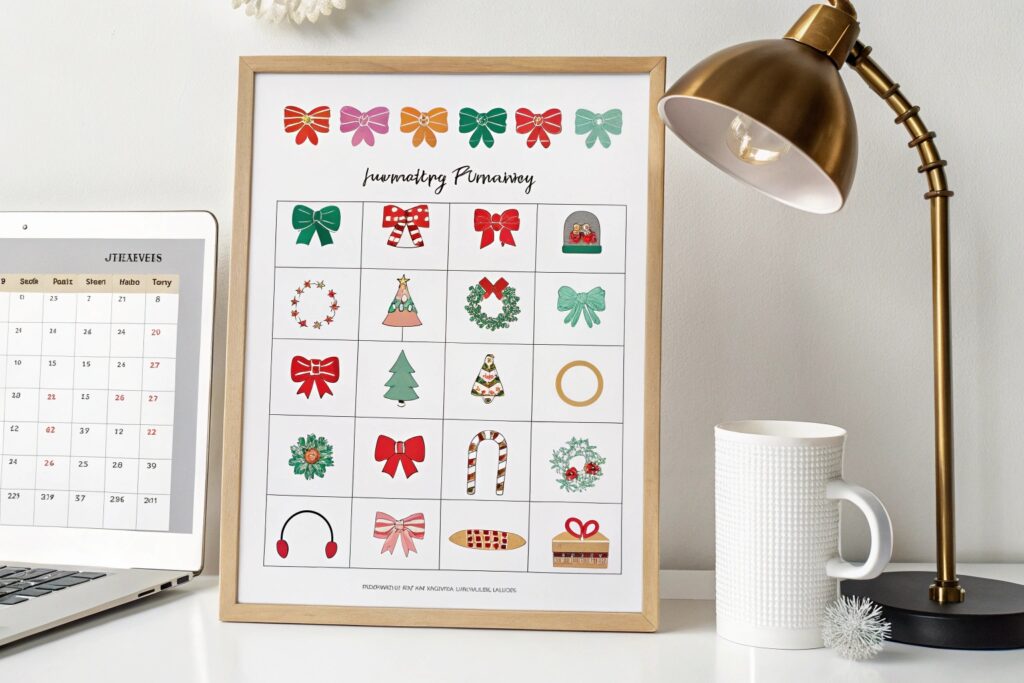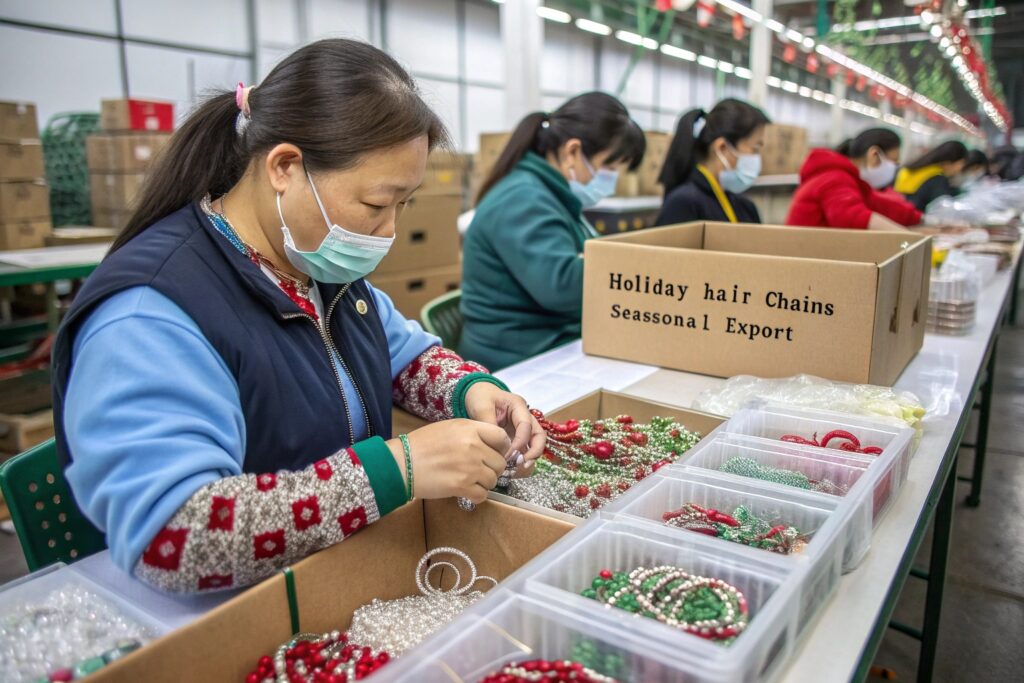Festive hair accessories like glittery chains, sequined clips, and holiday-themed headbands are hot-sellers during specific times of the year. But they also come with a big risk: overstock. Many e-commerce sellers and boutique buyers hesitate to place large orders, fearing they’ll be stuck with unsold seasonal items once the window passes.
Minimum Order Quantities (MOQs) for festive hair chains vary by material, customization level, and factory policies—but many reliable Chinese manufacturers now offer flexible MOQs starting from 300 units per style.
As a manufacturer, I’ve helped countless seasonal buyers balance creativity, cost, and risk by structuring MOQ strategies that support trend testing and bulk reorders. Here’s everything you need to know about sourcing festive hair chains without overcommitting.
What Factors Influence MOQ for Seasonal Hair Accessories?
Unlike evergreen items like black bobby pins or velvet scrunchies, seasonal products require tighter planning. Since they’re often tied to holidays or events, suppliers and buyers must agree on faster timelines, lower risks, and targeted volumes.
The MOQ for festive accessories depends on the accessory’s material type, production complexity, level of customization, and season-specific demand cycles.

How Does Material Type Affect MOQ?
Metal chains with custom plating may require a higher MOQ due to batch plating minimums. However, plastic or resin-based charms shaped into Christmas trees or snowflakes can be produced at lower quantities, typically 300–500 pieces. At HairAcc, we help clients choose sustainable and cost-effective materials for smaller runs.
What About Custom Colors or Holiday Packaging?
Customized colors or branded packaging usually increase MOQs. But we now offer digital printing on packaging and in-house design templates, so festive labels or hang-tags can be included even for small batches without raising the MOQ significantly.
Can E-Commerce Sellers Order Low MOQs for Festive Lines?
Most of our e-commerce clients want to test holiday demand without taking huge inventory risks. They ask: “Can I just order 200 of each style?” The answer is: sometimes, yes—especially if you’re working with the right factory.
Yes, e-commerce sellers can secure low MOQs for festive items like hair chains, especially when using shared molds or choosing standard materials.

What MOQ Do We Offer for Festive Hair Chains?
At HairAcc, our starting MOQ for non-custom festive hair chains is 300 pieces per style. For custom charms, the MOQ usually begins at 500–800 depending on mold complexity. Clients using our pre-approved holiday molds often benefit from even lower starting volumes.
We support small batch fulfillment by mixing 5–10 colorways per carton or combining SKUs across a holiday set. Similar programs are offered by Faire and Handshake for boutique stockists.
Can You Combine Holiday SKUs to Meet MOQ?
Absolutely. For instance, if a buyer needs 100 pieces of Santa chains, 100 of candy cane chains, and 100 of New Year sparkle chains, we group them under one 300 MOQ manufacturing run, using shared metal settings or backing cards.
How Do Customization and Lead Times Affect MOQ?
Customizing festive items is key to brand identity, but each custom element adds steps. MOQ policies shift depending on how customized the product is. Simple tweaks may not change MOQs. New molds, colors, or labels might.
The more custom the accessory, the higher the typical MOQ—unless the factory has in-house capabilities to offset setup costs through shared production lines.

What MOQ Applies to Fully Custom Festive Designs?
For clients developing new charm shapes (e.g., heart-shaped chains for Valentine’s Day), mold development requires a minimum of 1000 pieces per SKU. However, we often offer split production: make 300 now, reserve the mold for a future 700 reorder.
This tiered MOQ model gives brands more flexibility. Companies like Alibaba OEM vendors often allow split shipping or staged orders based on inventory planning.
How Do Lead Times Impact MOQ Decisions?
Fast seasonal cycles (like Easter or New Year) demand quick turnarounds. If the factory can produce in-house—like we do for printing, plating, and packaging—the MOQ can remain low even with a short deadline. Otherwise, outsourced customizations may require higher minimums due to logistics delays.
What Strategies Help Buyers Manage MOQ-Related Inventory Risks?
Buyers often ask us: “What if this style doesn’t sell?” My advice is always to test first, scale second. With proper MOQ planning, buyers can manage risk while still being first-to-market during holiday periods.
Smart inventory planning, SKU bundling, and mold reuse can help buyers reduce MOQ-related risk while launching seasonal collections confidently.

What’s the Best Way to Test a Festive Hair Chain Design?
Start with a 300-unit test batch across 2–3 colorways. Run a limited pre-sale or launch on a smaller e-commerce channel like TikTok Shop. Analyze sell-through rates and decide within 7–10 days whether to reorder.
We also provide trend forecasting based on past seasonal data to help buyers select which designs deserve larger commitment.
Can You Reuse the Same Design Next Year?
Absolutely. If a design like a gold star chain performs well, we store the mold and offer clients the chance to reorder 200–300 units the following year without retooling fees. This “recycling” approach helps control costs and ensures yearly stock continuity for returning customers.
Conclusion
Whether you're launching a festive hair chain collection for Christmas, Valentine's, or Halloween, MOQ shouldn’t hold you back. With the right supplier, you can test seasonal designs in low quantities, customize your packaging, and scale what sells. At HairAcc, we specialize in flexible MOQ solutions for buyers who want to move fast without overcommitting. If you're ready to bring seasonal sparkle to your store, we're here to help—order smart, stay agile, and sparkle big.









